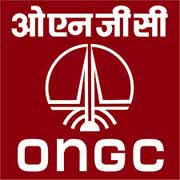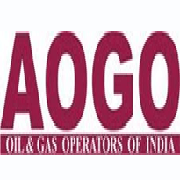-
Roads sector prospects brighten with new project awards
The prospects for India’s roads sector have brightened with new project awards and fewer stranded assets, after delayed clearances and poor traffic held up projects for years and soured bank loans.
Regulatory changes and greater government spending have helped revive the sector, multiple sector analysts and companies said. According to a 3 July Deutsche Bank report, the number of stressed projects in the roads sector is now down to just 19 from 384 in 2014.
Faster clearances and dispute resolution, last mile funding and easier exits for companies are among steps taken by the National Democratic Alliance (NDA) to help the sector since it came to power in May 2014, Deutsche Bank analysts said.
In recent quarters, traffic has grown 6-9% across road projects, according to numbers reported by firms, a positive sign for the sector at a time large and debt-laden conglomerates are looking to sell assets have skipped bidding for new projects.
“Increasing spending on infrastructure through reviving targeted public spends has been one of the core pillars of the Modi administration’s economic strategy. While there was initial skepticism on the success of this strategy, the progress—particularly in the power, coal, road and railway sectors—is now becoming visible and has also started showing tangible results,” the Deutsche Bank report said.
The centre has spent about Rs.71,700 crore on roads and highways over the past two years, 70% more than the average annual spend of Rs.21,100 crore in fiscal 2013 and 2014.
The total value of infrastructure projects awarded in fiscal 2016 is also up sharply by 28.3% to Rs.3.5 trillion—the highest in the past five years—led by roads and water, according to a 23 June report by Dolat Capital.
“The Indian construction and infrastructure sector offers massive investment opportunities to the tune of about Rs.28.2 trillion in coming years. Of this, power, road and railways account for 81.7%. Moreover, the government will lead this uptick in investments with a 67% share and the private sector contributing the rest 33%,” the report said.
The government has cleared several project proposals and offered a one-time capital infusion to revive those short of money. It plans to award 25,000km of road projects in 2016-17, compared with the 10,000km awarded in 2015-16.
In January, it approved a so-called hybrid annuity model, where it commits up to 40% of the project cost.
R. Shankar Raman, chief financial officer at Larsen and Toubro Ltd (L&T), the country’s largest engineering and construction firm, said these attempts are beginning to show results, but that the sector is only at the second stage of a full investment cycle revival.
“There has been an attempt to revive the sector and I think today all that we see is the results of those efforts. It’s too early to conclude the sector has revived because the stranded assets and NPAs (non-performing assets) have still not got off the books of banks. With traffic improving and regulatory conditions becoming easier, maybe they have a better chance of turning around,” Raman said.
Vinayak Chatterjee, chairman at consulting firm Feedback Infra Pvt. Ltd, says it takes at least 20 months for any government action to show results. “At a macro level, my theory is very simple—that the NDA government settled down around September 2014. From that day, the time theory of impact of public investments of 20 months is proving itself true, because all indicators across cement, steel, construction equipment, toll collection, freight movement and roads are showing an uptick,” he said.
India has the world’s second largest road network, with about 4.8 million km, but national and state highways constitute a small percentage of that network. Only 24% of the national highways have four lanes or higher, indicating opportunities for expansion.
Easier rules to exit projects have also helped, with at least five deals worth Rs.2,070 crore transacted in fiscal 2016 (see chart).
Reforms in roads, construction and mining will have a lasting impact on the business environment of the sector and in kick-starting a new wave of capex cycle, Antique Stock Broking analysts Dhaval Patel and Rahul Modi wrote in a 28 June report. “Assuming GDP (gross domestic product) growth at 8%, investment in infrastructure can be expected to increase to Rs.76 trillion over the next five years (from an estimate of Rs.11.3 trillion in the current fiscal) assuming an increase in construction spend to 9% of GDP which provides significant opportunity for industry players,” they wrote.
Investment in projects under implementation across sectors slowed during the quarter of fiscal 2017 with stalled projects at an all-time high, according to a recent report on India by Standard Chartered. While the stock of stalled government projects seems to have peaked at around Rs.2.8 trillion in the first half of fiscal 2016, stalled projects in the private sector continue to increase. About 56% of total stalled projects are in the electricity and metals sectors, and private sector investment at this point remains muted. Cole Bardreau Authentic Jersey
Share This



























































































